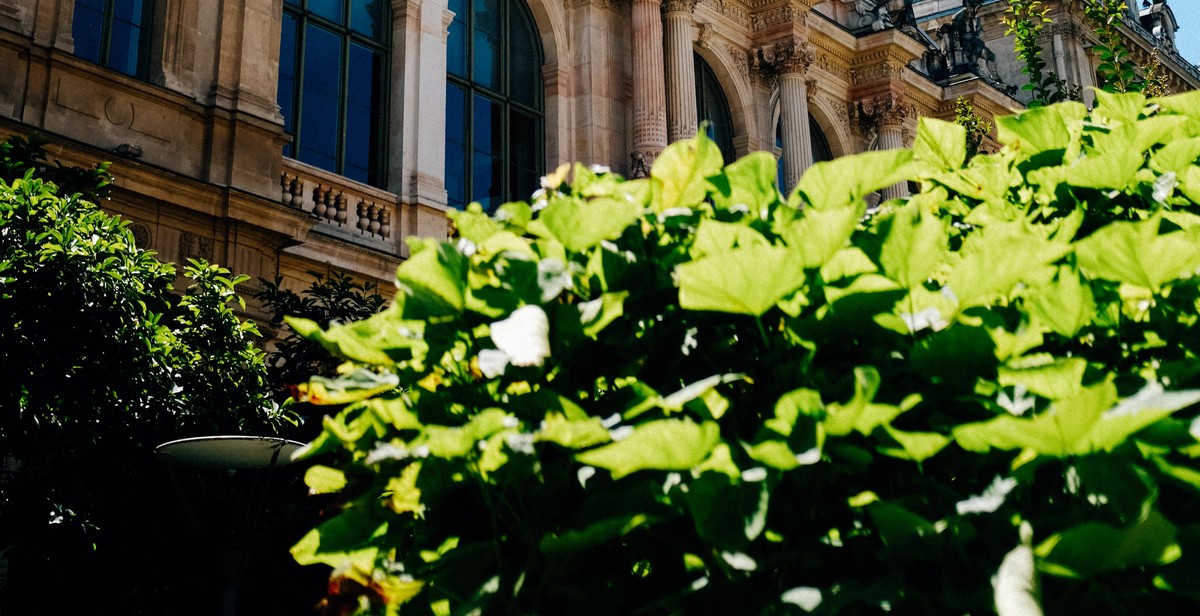How to Incorporate Gothic Architecture in Home Renovation: Adding Drama and Grandeur
Gothic architecture is a style that originated in Europe during the medieval period, characterized by its grandeur, drama, and ornate details. The style is known for its pointed arches, ribbed vaults, flying buttresses, and elaborate tracery. In recent years, Gothic architecture has become a popular choice for home renovation projects due to its ability to add a touch of drama and grandeur to any space.
What is Gothic Architecture?
Gothic architecture is a style that emerged in Europe during the medieval period, from the 12th to the 16th century. The style is known for its grandeur, drama, and ornate details. Gothic architecture is characterized by its pointed arches, ribbed vaults, flying buttresses, and elaborate tracery. The style was originally used in the construction of religious buildings such as cathedrals, but in recent years, it has become a popular choice for residential architecture as well.
Why Incorporate Gothic Architecture in Home Renovation?
There are several reasons why Gothic architecture is a popular choice for home renovation projects. Firstly, the style adds a touch of drama and grandeur to any space, making it perfect for homeowners who want to create a statement. Secondly, Gothic architecture is timeless and elegant, ensuring that your home renovation project will remain stylish for years to come. Finally, incorporating Gothic elements into your home renovation project can increase the value of your property, making it a wise investment for the future.

Elements of Gothic Architecture
Gothic architecture is a style that emerged in Europe during the Middle Ages and is characterized by its grandeur, intricate details, and pointed arches. Here are some of the key elements of Gothic architecture that can be incorporated into home renovation projects:
Pointed Arches
One of the most notable features of Gothic architecture is the pointed arch. This type of arch is taller and narrower than a rounded arch, creating a more vertical and dramatic effect. Pointed arches can be incorporated into doorways, windows, and even in the design of furniture pieces.
Vaulted Ceilings
Gothic architecture is also known for its soaring, vaulted ceilings. These ceilings are typically made up of a series of pointed arches that create a ribbed effect. Vaulted ceilings can add a sense of grandeur and drama to any room in the home, from the living room to the bedroom.
Stained Glass Windows
Stained glass windows are another hallmark of Gothic architecture. These windows are made up of small pieces of colored glass that are arranged in intricate patterns, often depicting religious scenes or figures. Stained glass windows can be incorporated into the design of doors, windows, and even as decorative accents on walls.
Gargoyles and Grotesques
Gargoyles and grotesques are often found on the exterior of Gothic buildings, perched on rooftops or perched on the sides of walls. These decorative features are typically carved in the form of mythical creatures or grotesque figures, adding a sense of whimsy and playfulness to the otherwise imposing architecture.
| Element | Description |
|---|---|
| Pointed Arches | Tall and narrow arches that create a dramatic effect |
| Vaulted Ceilings | Soaring ceilings made up of a series of pointed arches |
| Stained Glass Windows | Windows made up of small pieces of colored glass arranged in intricate patterns |
| Gargoyles and Grotesques | Decorative features in the form of mythical creatures or grotesque figures |

Incorporating Gothic Architecture in Home Renovation
Gothic architecture is a classic and timeless style that adds drama and grandeur to any home renovation project. The pointed arches, vaulted ceilings, stained glass windows, and gargoyles and grotesques are all iconic elements of Gothic architecture that can be incorporated into your home renovation project. Here are some tips on how to add these elements to your home:
Adding Pointed Arches
Pointed arches are a signature feature of Gothic architecture. They add height and drama to any room and create a sense of grandeur. If you want to incorporate pointed arches into your home renovation project, consider adding them to doorways, windows, or even as a decorative element on a wall. Pointed arches can be made from a variety of materials, including wood, stone, or plaster, and can be painted or left natural.
Installing Vaulted Ceilings
Vaulted ceilings are another hallmark of Gothic architecture. They create a sense of spaciousness and grandeur, and can be a stunning addition to any home renovation project. If your home has a flat ceiling, consider adding a vaulted ceiling to a room or even to your entire home. Vaulted ceilings can be made from a variety of materials, including wood, plaster, or even metal, and can be painted or left natural.
Adding Stained Glass Windows
Stained glass windows are a beautiful and iconic element of Gothic architecture. They add color, texture, and beauty to any room and can be a stunning addition to your home renovation project. If you want to incorporate stained glass windows into your home, consider adding them to a hallway, a bathroom, or even as a decorative element on a door. Stained glass windows can be made to order in a variety of colors and designs, or you can find vintage or antique stained glass windows to add to your home.
Incorporating Gargoyles and Grotesques
Gargoyles and grotesques are another signature feature of Gothic architecture. These decorative elements are often found on the exterior of buildings, but can also be incorporated into your home renovation project. Gargoyles and grotesques can be made from a variety of materials, including stone, concrete, or even metal, and can be added to a roofline, a chimney, or even as a decorative element on a wall. These elements add a sense of whimsy and playfulness to your home renovation project.
| Element | Materials |
|---|---|
| Pointed Arches | Wood, Stone, Plaster |
| Vaulted Ceilings | Wood, Plaster, Metal |
| Stained Glass Windows | Glass, Lead, Zinc |
| Gargoyles and Grotesques | Stone, Concrete, Metal |
Incorporating Gothic architecture into your home renovation project can add drama, grandeur, and a sense of timeless elegance. Whether you choose to add pointed arches, vaulted ceilings, stained glass windows, or gargoyles and grotesques, these elements are sure to make a stunning and lasting impression in your home.

Choosing the Right Decor
When it comes to incorporating gothic architecture into your home renovation, choosing the right decor is crucial to achieving the desired effect of drama and grandeur. Here are some tips on selecting the right furniture, lighting, and accessories to complement your gothic-inspired space:
Furniture
Gothic furniture is typically characterized by its ornate and intricate designs, featuring elements such as arches, pointed spires, and gargoyles. Choose furniture pieces that have these gothic features to create a cohesive look throughout your space.
Dark wood finishes, such as mahogany or cherry, are commonly used in gothic furniture and can add a sense of richness and depth to your space. Look for pieces with intricate carvings or decorative accents, such as claw feet or intricate scrollwork.
When it comes to seating, opt for plush, luxurious fabrics like velvet or leather. These materials not only add to the overall aesthetic of your space but also provide a comfortable place to relax and unwind.
Lighting
Lighting is a crucial element in creating a gothic-inspired space. Choose lighting fixtures that are ornate and dramatic, such as chandeliers or wall sconces with intricate details and dark finishes.
Consider using dimmer switches to control the ambiance of your space. This allows you to create a moody and atmospheric environment that is perfect for a gothic-inspired aesthetic.
Accessories
Accessories are the finishing touches that tie your gothic-inspired space together. Look for decorative items that have a sense of history and grandeur, such as antique mirrors, tapestries, or sculptures.
Incorporate gothic-inspired patterns, such as damask or lace, through throw pillows, curtains, or table runners. These small touches can add depth and texture to your space and help to create a cohesive look.
Finally, don’t forget to add some gothic-inspired artwork to your walls. Look for pieces that feature dark, moody imagery, such as landscapes or portraits, to help create the desired aesthetic in your space.
By following these tips and choosing the right decor for your gothic-inspired space, you can create a dramatic and grandiose environment that is sure to impress.
Conclusion
Gothic architecture is a timeless and dramatic style that can bring grandeur to any home renovation project. By incorporating key elements such as pointed arches, ribbed vaults, and stained glass windows, homeowners can create a unique and striking aesthetic that is both elegant and mysterious.
When renovating with a Gothic style in mind, it’s important to consider both the exterior and interior of the home. Adding ornate details to the façade, such as gargoyles or tracery, can create a stunning first impression. Inside, incorporating elements like exposed brick or stone, wrought iron fixtures, and richly textured fabrics can give a sense of depth and history.
It’s also important to balance the dramatic elements of Gothic architecture with practical considerations. Lighting, for example, should be carefully planned to highlight key features without overwhelming the space. And while Gothic architecture often features dark colors and heavy materials, incorporating lighter accents and modern touches can keep the space feeling fresh and inviting.
Overall, incorporating Gothic architecture into a home renovation project requires careful planning and attention to detail. But with the right balance of drama, elegance, and practicality, homeowners can create a truly unique and unforgettable space that is sure to impress.
